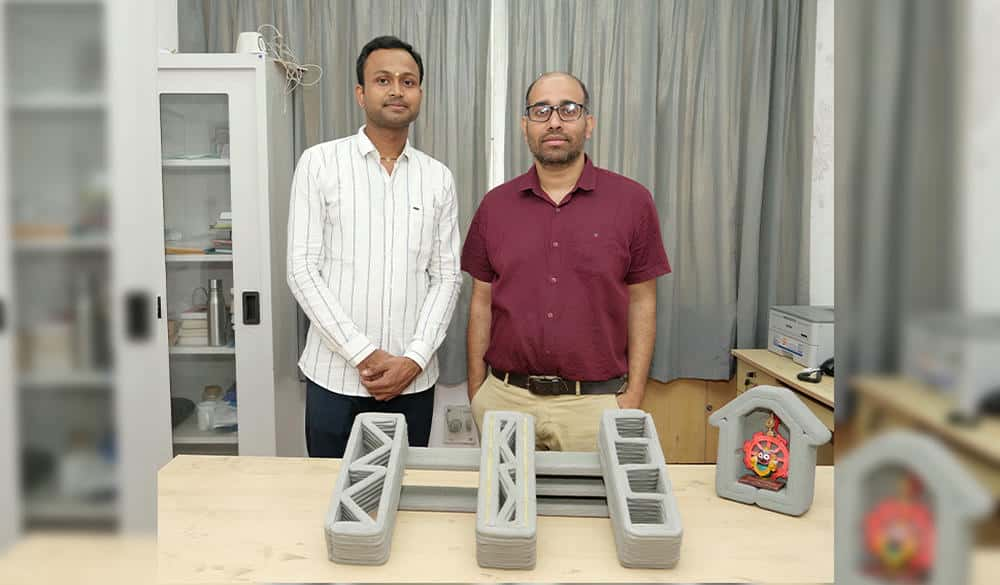IIT Guwahati pioneers 3D printed concrete walls to boost building energy efficiency and cut construction waste

In a breakthrough for sustainable construction, researchers at the Indian Institute of Technology (IIT) Guwahati have demonstrated how 3D-printed concrete lattice walls can significantly enhance the thermal performance of buildings. This cutting-edge study, led by Dr. Biranchi Panda from the Department of Mechanical Engineering, shows that lattice-patterned walls not only reduce energy consumption but also offer a practical path toward faster, cleaner, and more cost-effective construction.
The research, published in the international journal Progress in Additive Manufacturing, was co-authored by Dr. Panda, his research scholar Dhrutiman Dey, and collaborators Dr. Yash Shukla and Dr. Rajan Rawal from CEPT University, Ahmedabad.
At the heart of the study is 3D Concrete Printing (3DCP), a fast-evolving technology that uses automated machines to layer concrete directly from digital designs. Unlike traditional construction methods that rely on bulky temporary moulds, 3DCP minimizes material waste and slashes construction time and labour costs—by up to 60%, 70%, and 80% respectively.
The focus of this research was on lattice walls—intricately patterned, porous concrete structures made possible through 3D printing. Unlike solid flat walls, lattice structures can be tailored with voids of specific sizes and shapes, potentially impacting how buildings retain or repel heat.
“There has been growing interest globally in the thermal behaviour of 3D printed walls, but limited data exists in the Indian context, especially with lattice geometries,” said Dr. Panda. “We conducted both experimental lab tests and computer simulations to understand how void configurations in these walls influence heat transfer and internal temperature stability.”
The study offers detailed insights into how the shape and layout of voids within lattice structures affect thermal regulation. These findings have major implications for designing buildings that require less energy to stay cool or warm—especially vital in India’s diverse and often extreme climate zones.
Beyond thermal benefits, the team highlights the wider impact of this innovation: supporting climate-smart urban growth and affordable housing through sustainable construction practices. By reducing reliance on conventional materials and methods, 3DCP could help transform how cities build in the face of population growth and climate challenges.
With this study, IIT Guwahati positions itself at the forefront of a construction revolution. The research team is now expanding their work to develop multifunctional and climate-resilient concrete structures tailored to various regions across India.
As the country pushes for greener, faster, and more inclusive infrastructure development, technologies like 3DCP—and the research powering it—may prove pivotal in shaping the buildings of tomorrow.

Leave a Reply